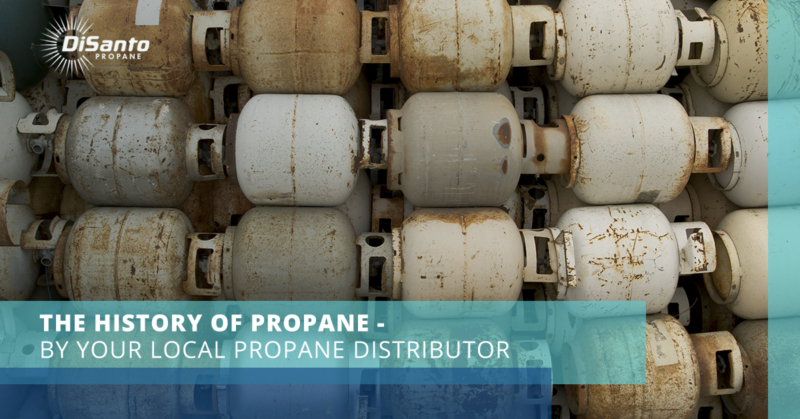Philip Connors is an author, and most definitely is not to be confused with Phil Connors, played by Bill Murray, from the hit 90’s comedy, Groundhog Day. The American author, Philip Connors, is more well-known for working at the Wall Street Journal and writing essays and books related to the great outdoors. Fire Season: Field Notes From a Wilderness Lookout received critical acclaim, winning the 2011 National Outdoor Book Award, the 2012 Banff Mountain Book Festival Grand Prize, and the 2012 Reading the West Book Award for best adult-nonfiction.
Why are we relaying these factoids to you? Because this peach of a human being Philip Connors loves the American outdoors and all it has to offer, that’s why. And as you can tell from the quote we pulled, he uses a little bit of propane to get in touch with what he loves most.
No, he didn’t write a book specifically about propane that received these awards — that would be partially amazing but mostly odd if that did happen.
Our point in this meandering preamble is this: we at DiSanto Propane get that most people don’t care or think about propane as much as we might, and that’s okay. But, as Philip perhaps unknowingly demonstrated, propane is a tool which connects you with the things and people you love. For Philip, it was likely how he lit his camp and maybe how he cooked. For you and yours, propane heat can be the way you all can stay warm over the holidays this and every winter. Of course, this is a somewhat romantic take on a very common form of energy, but when you are in the propane business for 80 years, you have some time to think about things from a few different angles.
With that in mind, enjoy these two classic Hank Hill quotes concerning his deep affinity with propane — a sentiment we happen to have in common with Mr. Hill.
“I wasn’t flirting with her! I didn’t even mention that I worked in propane.”
“You called in a fake propane emergency? That’s a $50 fine after I report it.”
(Teaching his son to clean a tank) – “Head to feet, you don’t cause a leak. Feet to head, everyone’s dead.â€*
“Taste the meat, not the heatâ€
*We recommend letting DiSanto clean your tanks for you, by utilizing our Mighty Flame Tank Exchange program.
We hope you enjoy those quotes as much as we do. But, getting back to the point, you didn’t click on this post for us to wax philosophical regarding propane and its beauty. You came to this post to learn about the history of propane and how our own Upstate New York propane company fits into the bigger picture of one of the most commonly used fuels in the world! Keep reading if such a post sounds like it might wet your whistle.
Propane History
Would you believe that we at DiSanto Propane are only seven years younger than the invention of propane itself? Believe it! Dr. Walter O. Snelling was a chemist and an expert in explosives who was working for the U.S. Bureau of Mines. In 1910, he was contracted for the purposes of looking into strange vapors emanating from the tank vent of a brand-new Ford Model T.
Dr. Snelling wanted to get a sample of the gasoline the Model T was using so he filled a jug and transported it back to his lab. The story goes that Snelling noticed something unusual on his trip back; the cork kept getting uncorked due to the volatile vapors that he observed forming in his jug. As any scientist worth their salt would do, Walter Snelling investigated this occurrence. After Dr. Snelling worked his doctoral magic, he was able to manipulate and control this volatile gas, separating the gas into its gaseous and liquid components. In doing so, Snelling discovered that propane was merely one component of the gasoline he was observing. Shortly thereafter, Snelling put his sharp mind to work in learning that propane could be used for cooking, metal cutting, lighting, and other such applications. Â Â
It didn’t take long for propane to become a popular fuel source. Dr. Snelling, along with Frank Peterson and the Kerr brothers, opened up the very first propane distribution venue in their founding of American Gasol Co. Dr. Snelling, of course, received a patent for the processing and production of propane.
Dr. Snelling was less a man of business and more a man of science and medicine, as it turned out. He ended up selling his patent to one Frank Phillips, the founder of  Phillips Petroleum Co., for $50,000 in 1913. For reference, that sum would be worth $1,260,373.74 in 2018. So let’s not think Snelling got absolutely fleeced in this deal. All things considered, Phillips would have to have been pretty pleased with the outcome of negotiations, we will warrant. Â
Decade-By-Decade Breakdown
20s
In 1922, The Bureau of Mines started tracking the sale of propane in the U.S., the total of which was just 223,000 gallons in 1922. By the end of the “roaring 20s,†the aggregate total gallons sold reached 10 million. Phillips Petroleum, or ConocoPhillips as they are now known as, began looking into the propane’s applications with reference to gas equipment and domestic appliances.
30s
Along with expansion came the need to regulate and make the propane industry a safe one. Propane odorants were added to the fuel in order to make leaks more easy to detect. By 1934, national sales reached 56 million gallons! Also of note, this was the decade that saw the introduction of 21-pound propane tanks, akin to the ones we distribute here at DiSanto!
40s
Propane sales — *pinky-finger to mouth* — one billion gallons in the 40s after WWII. Propane-powered or natural gas ranges were in over half of all homes in America by the turn of this decade. Additionally, the propane clothes dryer was introduced during the same period of time the first seafaring propane tanker (the SS Natalie O. Warren, for all you trivia buffs) was introduced.
50s
Across american homes, around 8 billion propane installations were performed. The industry just kept on trucking, reaching over 7 billion gallons in yearly national sales.
60s
During the 60s, more and more families began utilizing propane as a part of their daily lives. This is why 13 million tanks were established across the country, in addition to the very first 50,000-gallon tank being made for propane transportation.
70s And 80s
Propane, as all wonderful things do, became politicized in this era, as the USA dealt with the Arab oil embargo and price controls. In 1981, such price controls were done away with by actor-turned-President Ronald Reagan.
90s
Environmentalism became a prominent social topic in the 90s. In 1990, propane became listed as an approved alternative clean fuel in the 1990 Clean Air Act. A few years later, propane was also listed as an alternative fuel in the Energy Policy Act of 1992. In 1996, the Propane Education & Research Council (PERC) got authorization from the United States Congress to promote the safe, efficient use of odorized propane gas, specifically as a “preferred energy source.â€
Modern Day
Today, propane accounts for between three and four percent of all energy in the United States. In both commercial and residential sectors, propane is known as a money-saving, clean source of energy. In our next post, we’ll take a deeper dive into modern day propane applications, including how propane is used as an inexpensive, safe, and alternative fuel. Keep an eye open for that post in the very near future!
If you have any questions or would like to speak with a customer service representative from DiSanto Propane, we’d be happy to speak with you. View our locations or become a customer with just a click! Consider DiSanto Propane as your local propane distributor today!


